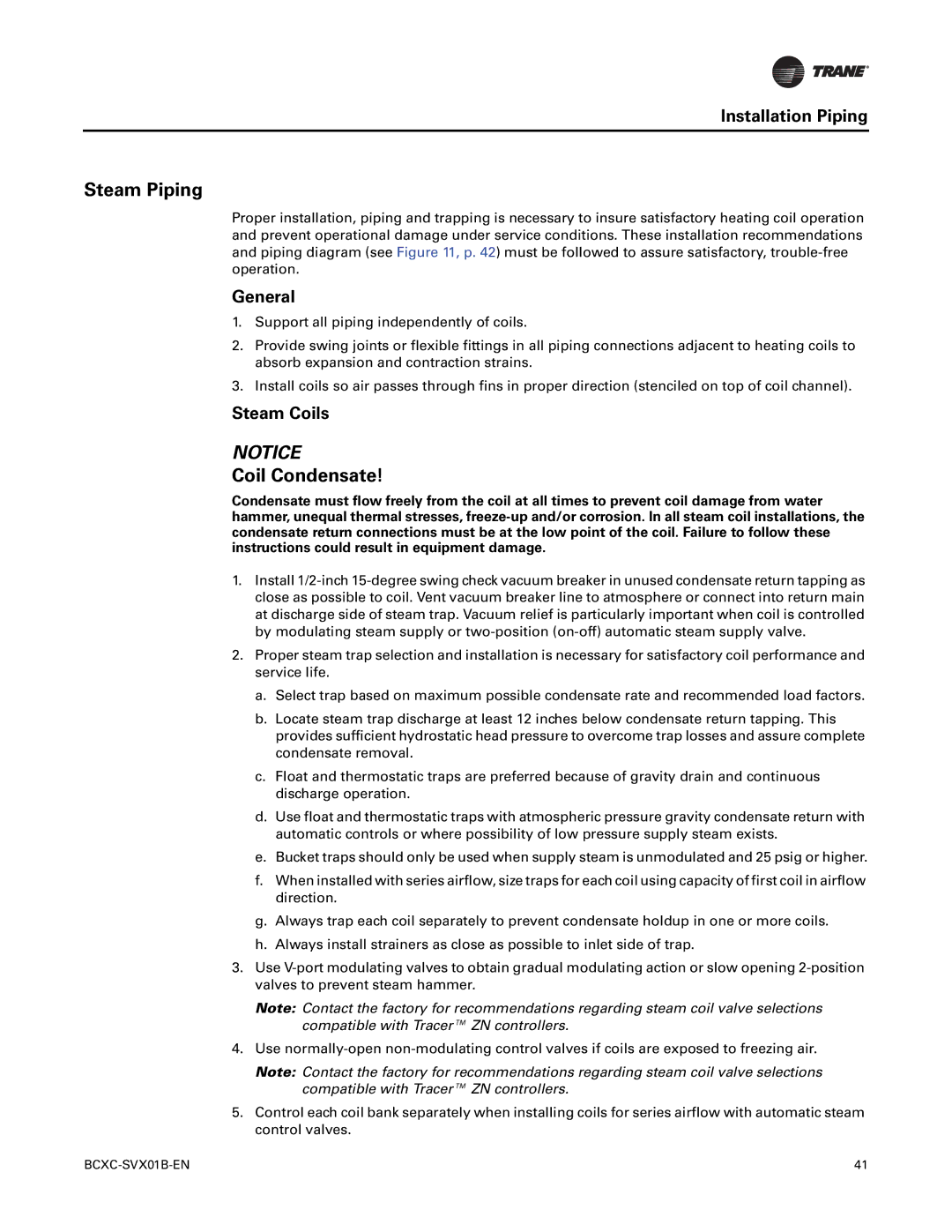
Installation Piping
Steam Piping
Proper installation, piping and trapping is necessary to insure satisfactory heating coil operation and prevent operational damage under service conditions. These installation recommendations and piping diagram (see Figure 11, p. 42) must be followed to assure satisfactory,
General
1.Support all piping independently of coils.
2.Provide swing joints or flexible fittings in all piping connections adjacent to heating coils to absorb expansion and contraction strains.
3.Install coils so air passes through fins in proper direction (stenciled on top of coil channel).
Steam Coils
NOTICE
Coil Condensate!
Condensate must flow freely from the coil at all times to prevent coil damage from water hammer, unequal thermal stresses,
1.Install
2.Proper steam trap selection and installation is necessary for satisfactory coil performance and service life.
a.Select trap based on maximum possible condensate rate and recommended load factors.
b.Locate steam trap discharge at least 12 inches below condensate return tapping. This provides sufficient hydrostatic head pressure to overcome trap losses and assure complete condensate removal.
c.Float and thermostatic traps are preferred because of gravity drain and continuous discharge operation.
d.Use float and thermostatic traps with atmospheric pressure gravity condensate return with automatic controls or where possibility of low pressure supply steam exists.
e.Bucket traps should only be used when supply steam is unmodulated and 25 psig or higher.
f.When installed with series airflow, size traps for each coil using capacity of first coil in airflow direction.
g.Always trap each coil separately to prevent condensate holdup in one or more coils.
h.Always install strainers as close as possible to inlet side of trap.
3.Use
Note: Contact the factory for recommendations regarding steam coil valve selections compatible with Tracer™ ZN controllers.
4.Use
Note: Contact the factory for recommendations regarding steam coil valve selections compatible with Tracer™ ZN controllers.
5.Control each coil bank separately when installing coils for series airflow with automatic steam control valves.
| 41 |
